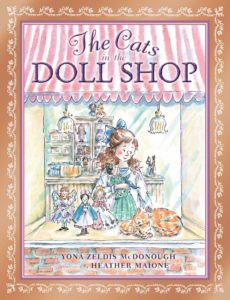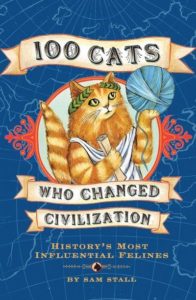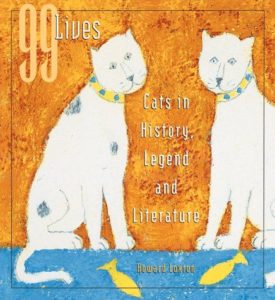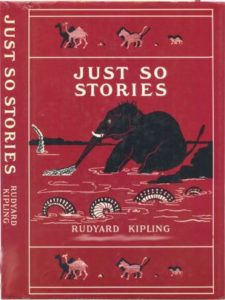
|
The story of “The Cat Who Walked By Himself” is one of Rudyard Kipling’s Just-So Stories, along with such perennial favorites as “How the Camel Got His Hump,” “How the Rhinoceros Got His Skin,” “The Elephant’s Child,” and “The Butterfly That Stamped.” Originally written in 1902, the book is now available in many editions. The text is also available online. |
|
Write a Just-So story of your own? Pourquoi Stories: Creating Tales to Tell Why has a book list and helpful reading and writing worksheets. The How and Why of Writing a Pourquoi also has instructions and suggestions. |

|
“The Cat Who Walked By Himself” in the form of a children’s play is included in Lisa Bany-Winters’s On Stage: Theater Games and Activities for Kids (Chicago Review Press, 2012). |
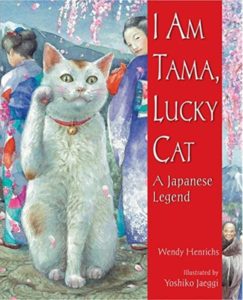
|
Wendy Henrichs’s I Am Tama, Lucky Cat (Peachtree Publishers, 2011) is a picture-book version of the Japanese legend of Maneki Neko, the Beckoning Cat, in which a little cat is taken in and cared for by a poor monk. Eventually the cat saves the life of a samurai warrior (by beckoning him out of the path of a falling tree), for which good deed both cat and monk are generously rewarded. Images of a beckoning cat are therefore said to bring good fortune. For ages 4-8. |

|
Other picture-book versions of the Japanese Lucky Cat tale are Susan Lendroth’s Maneki Neko: The Tale of the Beckoning Cat (Shen’s Books, 2010) and Koko Nishizuka’s The Beckoning Cat (Holiday House, 2009). |

|
Ed Young’s Cat and Rat (Square Fish, 1998) is a beautifully illustrated tale of the Chinese zodiac. The Emperor holds a race among all the animals, announcing that the names of the first twelve to cross the finish line will be given to a year in the Chinese calendar. Rat cheats, which is why Rat and Cat are enemies to this day. For ages 5-8. |

|
“The Boy Who Drew Cats” is a traditional Japanese folktale in which a young artist, training to be a priest, insists on drawing pictures of cats on the walls and screens of the temple. Sent away by his frustrated teacher, the boy shelters in an abandoned temple overnight – but not before he covers the walls with pictures of cats. He then goes to sleep in a cabinet, but wakes to the sound of a terrible battle. In the morning a demonic Goblin Rat lies dead on the floor and the mouths of the painted cats are wet with blood. A picture-book version of the tale, Margaret Hodges’s The Boy Who Drew Cats (Holiday House, 2002) is shamefully out of print, but can be found in public libraries and through used-book suppliers. For ages 5-8. |
|
The Annotated Puss in Boots has an annotated version of Charles Perrault’s classic fairy tale in which a miller’s youngest son inherits a very clever cat and ends up rich and married to a princess. The website includes a history of the story, multicultural versions of the tale, and a Puss in Boots book and movie list. |

|
Among these are Philip Pullman’s Puss In Boots: The Adventures of That Most Enterprising Feline (Knopf Books for Young Readers), Paul Galdone’s Puss in Boots (Sandpiper, 1983), and Charles Perrault’s Puss in Boots (Square Fish, 2011), a Caldecott Honor Book, gorgeously illustrated by Fred Marcellino. |








